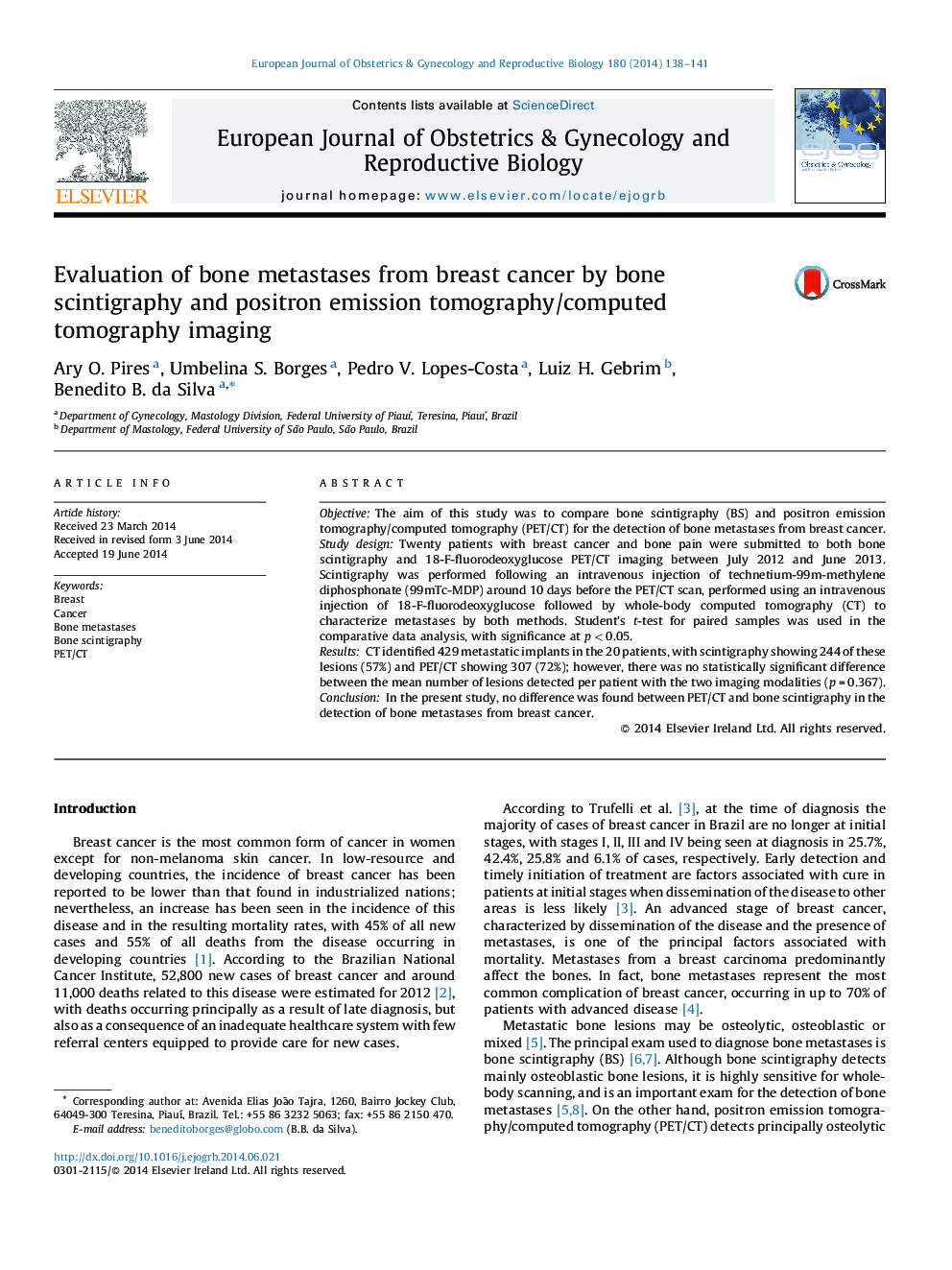| Article ID | Journal | Published Year | Pages | File Type |
|---|---|---|---|---|
| 6173531 | European Journal of Obstetrics & Gynecology and Reproductive Biology | 2014 | 4 Pages |
ObjectiveThe aim of this study was to compare bone scintigraphy (BS) and positron emission tomography/computed tomography (PET/CT) for the detection of bone metastases from breast cancer.Study designTwenty patients with breast cancer and bone pain were submitted to both bone scintigraphy and 18-F-fluorodeoxyglucose PET/CT imaging between July 2012 and June 2013. Scintigraphy was performed following an intravenous injection of technetium-99m-methylene diphosphonate (99mTc-MDP) around 10 days before the PET/CT scan, performed using an intravenous injection of 18-F-fluorodeoxyglucose followed by whole-body computed tomography (CT) to characterize metastases by both methods. Student's t-test for paired samples was used in the comparative data analysis, with significance at p < 0.05.ResultsCT identified 429 metastatic implants in the 20 patients, with scintigraphy showing 244 of these lesions (57%) and PET/CT showing 307 (72%); however, there was no statistically significant difference between the mean number of lesions detected per patient with the two imaging modalities (p = 0.367).ConclusionIn the present study, no difference was found between PET/CT and bone scintigraphy in the detection of bone metastases from breast cancer.
